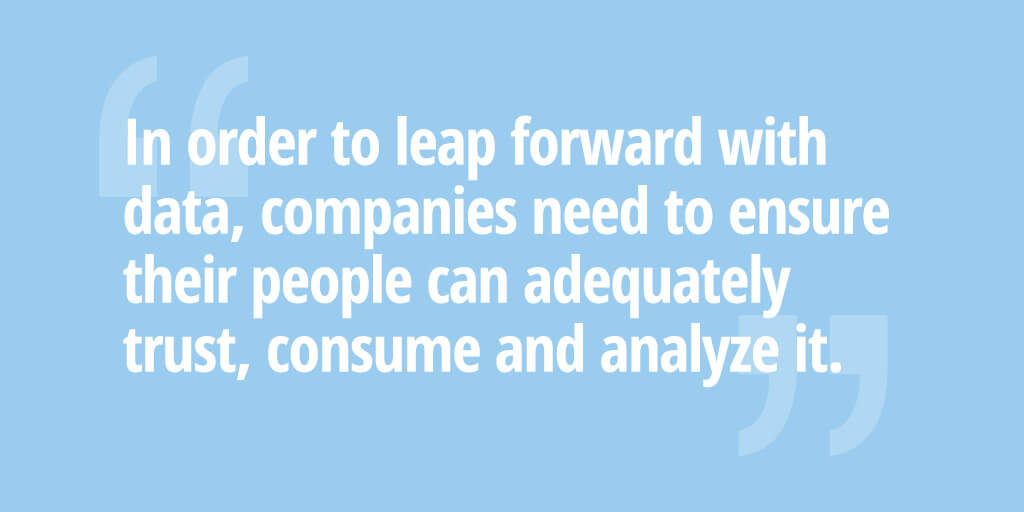Big Data Paralyzing Your Business? Avoid These Three Common Traps (Part 1)
By Brent Dykes, Director, Data Strategy
Wednesday, June 7, 2017

With the abundance of data flowing into organizations these days, the next challenge isn’t usually how to acquire more data but how to translate it into something meaningful—informed actions that lead to higher revenues, lower costs, increased productivity, greater customer loyalty and so on. As traditional businesses still struggle with how to best capitalize on their data, many of today’s startups have data engrained in their DNA. In a 2015 Capgemini study, 58% of senior leaders expected to face greater competition from these data-enabled startups. However, whether you’re an established player or data-savvy newcomer, you’re equally susceptible to becoming paralyzed by data.
As the volume of data expands and the dependence on data increases, there’s a higher likelihood of companies being potentially handcuffed by data if they’re not disciplined and attentive. Instead of data enabling your business to be more effective and efficient, it can produce the opposite effect and actually impede your ability to make decisions and drive outcomes. Quickly, your highly-prized, digital asset can turn into a potential liability.

In order to leap forward with data, companies need to ensure their people can adequately trust, consume and analyze it. In this article, I’ll discuss three significant roadblocks or traps, that if un-checked, will immobilize your people and block your company’s forward momentum with data.
1. Data Distrust
One of the most pervasive forms of data-related paralysis is data distrust, which occurs when individuals question the quality of their data and refuse to rely on it for decision-making. In a recent KPMG study, 84% of CEOs indicated they’re concerned about the quality of the data they’re basing their decisions on. Data quality is clearly top of mind for most executives as they want to avoid making wrong decisions based on erroneous or incomplete data.
While it’s healthy to question one’s data, it can be debilitating when you lose complete faith in it and resign to “flying blind.” In these cases, decisions and actions are still being made—just without the assurances and benefits that data can provide. Once data distrust takes hold at an organization, it can significantly undermine all analytics efforts and remain a barrier until it is adequately addressed.

While it is easy to point the finger at your data, you often need to look in the mirror as well when it comes to data distrust. Most analytics professionals recognize data is inherently messy and dirty. However, in many cases, flawed data can still be helpful and safe for directional guidance. Data can be precise yet inaccurate and still be insightful. For example, if your online revenue is consistently 10-15% higher in your digital analytics tool than in your transactional system (mainly due to not factoring out returns and fraudulent orders), the data is still directionally sound.
Too often a higher standard is placed on the data (perfection) than scrutinizing one’s own beliefs, opinions and assumptions. In the quest for perfect data, most companies will experience diminishing returns as they inch closer to a 100% match between two systems. It can often be very costly and time-consuming to remove the last 10-to-1% of variance and rarely worth the effort and time to do so. Rather than shutting down whenever you run across unexpected differences or anomalies, it’s important to build up your “dirty data” immunity system and tolerance for imperfections so you can continue to extract value from your data
**This article was originally published on Forbes.com on September 28, 2016
Share this:

Brent is the Director of Data Strategy at Domo. He has over 12 years of enterprise analytics experience and received the 2016 Most Influential Industry Contributor Award from the Digital Analytics Association (DAA). Brent is also a regular Forbes contributor and published author.
